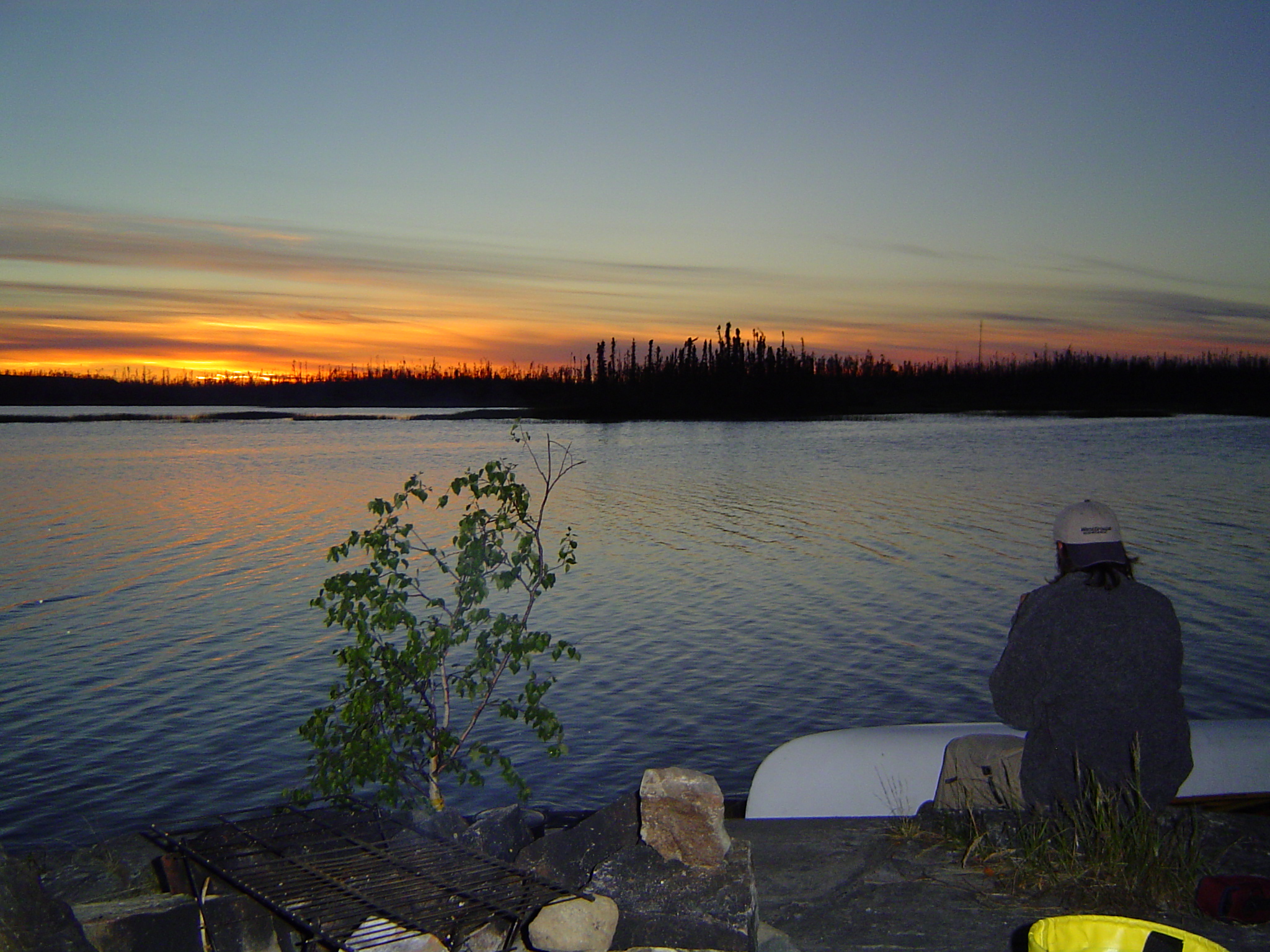We love camping. We love canoeing. So it stands to reason we love canoe-camping! But if you’ve gone to any provincial or national parks in Canada, you know it’s getting more expensive to take advantage of Canada’s natural beauty.
That’s why Yellowknife’s Ingraham Trail offers one of the best experiences you can get in canoe-camping. This 70-km dead-end road heads east from Yellowknife, Northwest Territories, and is the perfect gateway to unlimited free canoe-camping sites. There are three territorial campgrounds with amenities scattered along the road, but you can hop on any other of the numerous lakes and pick your spot… for free.
This is wilderness camping at its best. You get to a lake in as little as 15-20 minutes, paddle for however long you want and pick a nice rocky outcrop where the breeze will keep the bugs down. It’s heaven, and you don’t have to worry about the light fading until 11pm!
We spent 10 years in Yellowknife and paddled/camped along most of the Ingraham Trail. The following are the two best places, and they are easy enough to bring your kids along.
Just make sure to bring lots of bug repellent and bug jackets, and don’t forget your fishing rod. Pike, trout, lake whitefish and even walleye and grayling can all be found in the lakes along the Ingraham Trail.
Hidden Lake
This trip is probably best suited for canoeists and campers with some experience because of the remoteness and the three portage routes, Hidden Lake is Yellowknife’s gem. It’s a beautiful lake, with clear water and great fishing, and the tranquility makes it all worthwhile. (Here’s a map and more details of Hidden Lake from NWT Parks.)

You put in at Powder Point (km 44) and begin paddling short distances interspersed with progressively longer portages. The first portage is only about 60 metres, hugging a set of small rapids 5-10 minutes from the put-in. The second portage is slightly longer and more arduous, coming in at 300 metres with some uphills and downhills. It’s the third portage that makes this lake difficult to get to. It’s 600 metres and starts off with a fairly steep incline. That said, if the water levels are high enough, you can skip about half of the portage by navigating the little river on the left hand side after the climb.

But once at Hidden Lake, you have your pick from a number of islands and you can sit back and relax. You can easily spend two to three days just exploring the lake, with its bays, inlets and rocky outcrops. There are some interesting historical sites scattered along the shore. If you are even more adventurous, you can reach a few other lakes via portages. There’s even one referred to as Extra Hidden Lake. Ask around in town or at the information centre for more details.
Tibbitt Lake
Tibbitt Lake is an easy, 16 km loop right at the end of the Ingraham Trail. It offers great fishing, amazing sunsets and complete remoteness. This is where the ice road to the diamond mines begins in winter time. (Here’s a map and more details of Tibbitt Lake from NWT Parks.)

The trip takes you through four connecting lakes (Tibbitt, Terry, Upper Terry and Goop lakes. There are two portages, on either side of Goop Lake, but neither is longer than 250 m and both are easily spotted and well-maintained. This is a perfect initiation to wilderness camping and portaging for families.
You’ll find blueberry bushes along the route in August, and, in the fall, you’ll find cranberries (they are best picked right after the first frost). The best campsites are on the islands of Terry Lake. This is a somewhat popular weekend trip for Yellowknifers, but you’ll still likely only encounter two or three other canoes during your stay. It’s a great initiation to canoe-camping for those who’ve done both but never combined the two yet.





